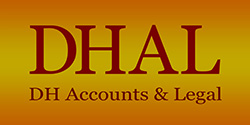The start of the new tax year in UK brings a raft of tax changes that you simply can’t afford to ignore as they all come into force in the coming months.
We have provided some of 10 key changes and the proposed implementation dates.
1. The Personal Allowance will rise from April 2017
The Personal Allowance is the amount of income you can earn before you start paying income tax. It’s currently £11,000 this year, and will rise to £11,500 in 2017-18. The point at which you pay the higher rate of income tax will increase from £43,000 this year, to £45,000 in 2017-18.
2. The National Living Wage and The National Minimum Wage will increase from April 2017
The National Living Wage for those aged 25 and over will increase from £7.20 per hour to £7.50 per hour. That means over £1,400 a year more for a full-time worker previously on the National Minimum Wage.
The National Minimum Wage will also increase:
for 21 to 24 year olds – from £6.95 per hour to £7.05,
for 18 to 20 year olds – from £5.55 per hour to £5.60,
for 16 to 17 year olds – from £4.00 per hour to £4.05,
for apprentices – from £3.40 per hour to £3.50.
3. Hours of free Childcare for 3 and 4 year olds will increase from September 2017
Working families with 3 and 4 year olds will receive 30 hours of free childcare – an increase from the 15 hours they’re currently offered.
4. Child Tax Credit won’t be available for more than two children from April 2017
Most people will only get the child element of Child Tax Credit for up to 2 children. You’ll still be able to claim it for more than 2 children if they were born before 6 April 2017.
5. New tax allowances for money earned from the sharing economy from April 2017
There will be two new tax-free £1,000 allowances – one for selling goods or providing services, and one income from property you own.
6. Corporation Tax will be cut from April 2017
The main rate of Corporation Tax has already been cut from 28% in 2010 to 20%, in order to boost UK competitiveness. It will now fall further, from 20% to 19% in 2017.
7. Expanding the museums and galleries tax relief, starts in April 2017
The rates of relief will be set at 20% for non-touring exhibitions and 25% for touring exhibitions. The relief will be capped at £500,000 of qualifying expenditure per exhibition.
8. Business Rate Relief will increase to 100% from April 2017
Business Rate Relief will increase from 50 to 100% in April 2017, saving a business up to £2,900 a year. Businesses with a property with a rateable value of £12,000 and below will receive 100 per cent relief.
9. Fuel duty will remain frozen for a seventh year
In 2017 Fuel duty will remain frozen for the seventh successive year, saving drivers £130 a year on average.
10. New Vehicle Tax Rates from April 2017
The way Vehicle Tax is calculated will change for cars and some motor homes that are first registered with DVLA from 1 April 2017. There will be a flat rate of £140 for most cars, except in the first year when tax will remain linked to the CO2 emissions that cars produce.
More information you can find on GOV.UK website.
If you have any questions or need advice how this will affect you and your business, contact us.
Contact us
Follow us on Facebook to find more tips in business, accounting, tax and legal.




